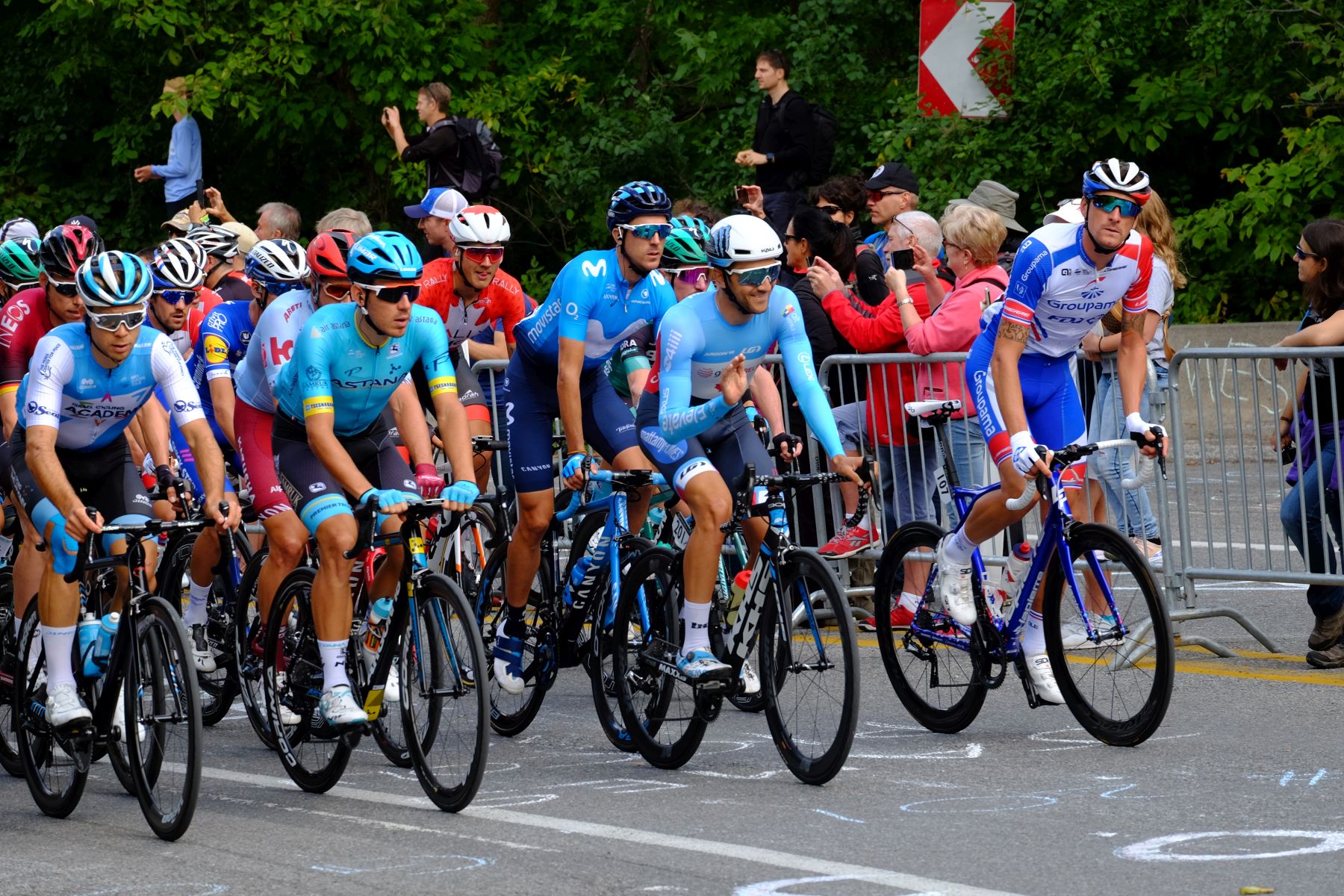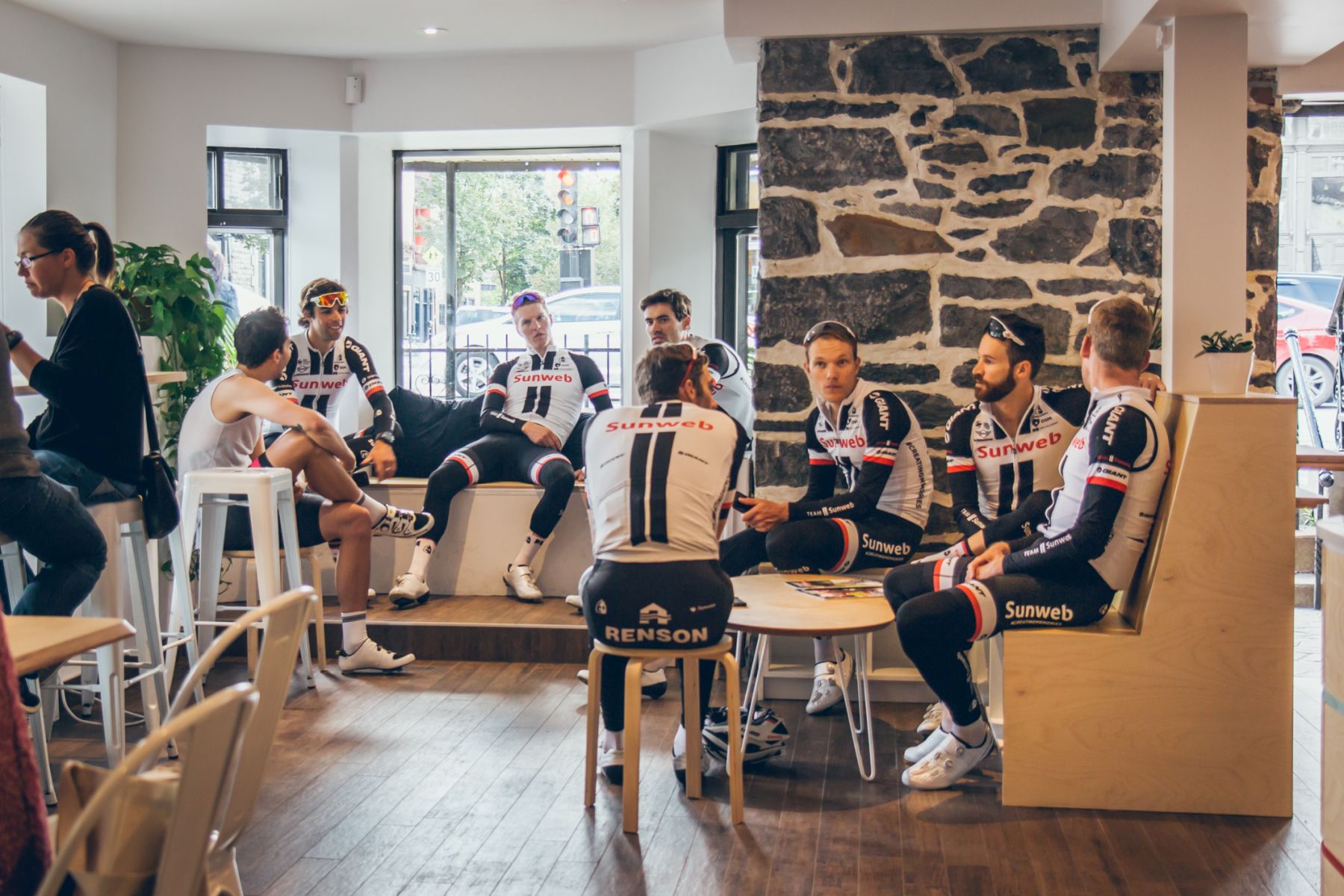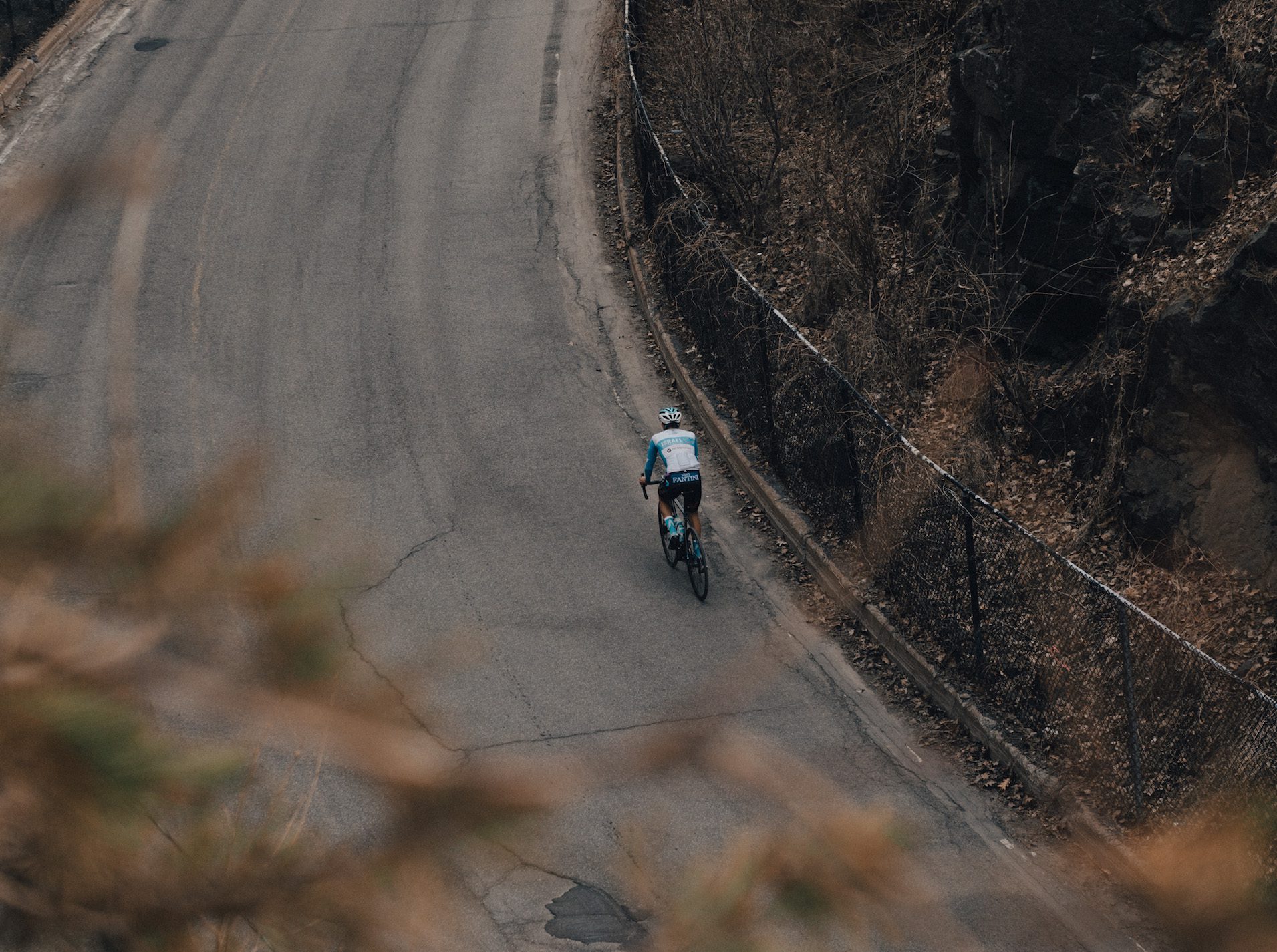The Grand Prix Cycliste de Montréal, the pandemic and hope for a city
Montreal has been hit hard by COVID-19. A bike race could be what the metropolitan area needs, if that race makes it to its own start line

“If ever I get into this race, you guys can totally embarrass me.” Those were the words Montreal rider James Piccoli had for his parents. Gene and Angie are his biggest fans, and sometimes offer blush-worthy support to their son. Lining up for the Grand Prix Cycliste de Montréal would not only be a significant milestone for the young Piccoli, but his whole family. Why not celebrate in a big way?
Before Piccoli was an aspiring road racer, he was a fan of the sport. He and his father would ride their bikes to the circuit of La Coupe du Monde Cycliste Féminine de Montréal to watch the women’s race that ran from 1998 to 2009. The men’s WorldTour race came to the city in 2010. At that event, Piccoli would stand at the bottom of the main climb up Camillien-Houde Way and his father would set up at the top. When the peloton would pass James, he’d call his father, who would start timing. The two data junkies kept track of the pros’ times up their local climb. Camillien-Houde, which takes riders up Mount Royal, is Piccoli’s climb. He’s trained on it all his life. He’s joked that he knows every blade of grass. It’s his benchmark for his fitness. Marco Pantani had Monte Carpegna, Piccoli has Camillien-Houde. In early May, he rode up and down the climb 100 times to raise money for personal protective equipment, which would go to hospitals, retirement homes and homeless shelters in the city. But in the early 2000s, James and his father just wanted to see how fast the pros were moving on their streets.
In 2018, Piccoli was included on the national team, a squad of Canadians that forms just for the Grand Prix Cycliste de Montréal, and the Grand Prix Cycliste de Québec that runs two days before in Quebec City. Organizers of the Quebec one-day races ensured that Canadian riders would be able to participate in the WorldTour-level events. It was a dream come true for Piccoli. That year, Piccoli’s parents and friends set up at the first corner on Camillien- Houde with coolers and balloons. Most wore blue T-shirts with “James Piccoli Fan Club” printed on them. They ate and handed out biscotti that James himself had made.
“I genuinely think that if the Grand Prix Cycliste were never organized, I might not be a professional cyclist right now,” Piccoli said this past spring. “Not only did the race give me a platform to perform against WorldTour teams, it also just gave me something to aim for, something to strive for. It gave me hope.” That hope carried him through the ups and downs of riding in the North American cycling scene. In 2018, he became the first Canadian in 10 years to win the Tour de Beauce. He not only rode in the Grand Prix races in 2018, but in 2019, too. (His fan club set up on the first corner of Camillien-Houde once again that year.) This past October, Piccoli signed with the WorldTour team Israel Start-Up Nation. It’s a journey he feels would have been more difficult, maybe impossible, if it weren’t for the top-level races in Quebec City and, especially, in his hometown.

A sporting event such as the Grand Prix Cycliste de Montréal is almost always more than a simple contest of athletes. It has economic effects. A sporting event can even influence politics and societies. The 1946 Giro d’Italia was dubbed the Giro of Rebirth, an event that people hoped would bring together a nation wrecked by the Second World War. That Giro’s winner, Gino Bartali, was under pressure by Italy’s Prime Minister Alcide De Gasperi to win the Tour de France in 1948. The politician hoped a Bartali victory could quell unrest in Italy following an assassination attempt. Bartali won the Tour, and then the tension in Italy dissipated.
While the city of Montreal has seen politics and sport mix – the Richard Riot of 1955 following the suspension of Maurice “The Rocket” Richard of the Montreal Canadiens was connected with tensions between French and English Canada – it’s the COVID-19 pandemic that has affected all events in the city. In May, the Grand Prix was still set to run on Sept. 13. But plans were still uncertain. How would it work? Could there be the regular crowds along the city’s streets? How would Europe-based riders and teams even get to the Quebec City and Montreal races with air travel badly disrupted by the pandemic. And what of Montreal? The city has been the hardest hit area in Canada by COVID-19. Would it be ready for a bike race? Would it want it? It has offered hope and inspiration to riders such as Piccoli. Could it do the same for other people in Montreal?
In the late 2000s, GPCQM race founder Serge Arsenault felt Montreal needed a bike race because sports seemed to be slipping away from the city. In 2001, a U.S. businessman, George N. Gillett Jr., acquired 80 per cent of the Montreal Canadiens, giving rise to fears that the hockey team might move. The Montreal Expos baseball team did depart in 2004. La Coupe du Monde Cycliste Féminine de Montréal was coming to a close. But the catalyst for Arsenault came from motorsport. “When Bernie Ecclestone decided to leave Montreal out of the Formula One calendar, I was a little bit angry about that,” Arsenault said. Even though F1 only disappeared for the 2009 season, Arsenault felt he needed to act. He phoned the mayors of Quebec City and Montreal with a pitch. “Why don’t we organize something that we own,” he remembered saying. “Something that we could keep for years and years to come. And we will be the ones who make the decisions, not other people.” The sporting events he had in mind were top-level cycling races.
Arsenault knows cycling. The former journalist covered the 1974 world championships that Eddy Merckx won in Montreal as well as the 1976 Olympics. From 1988 to 1992, he ran the Grand Prix des Amériques in Montreal, which was part of the UCI World Cup at the time. His new races, he insisted, had to be at the top-level of the sport if they were to succeed. But ProTour events, as they were called then, were not just created overnight, especially ones that would be the first of their kind in North America. Arsenault had some tough negotiations with the UCI president Hein Verbruggen. In the end, Arsenault got what he wanted: two top-level, one-day races for Quebec’s major cities.

For 10 years, the GPCQM have been successes. Pros look forward to the events. The list of athletes who’ve attended includes Chris Froome and Alberto Contador. Peter Sagan won his 100th race in Quebec City in 2017, after winning there in 2016 and in Montreal in 2013. Greg Van Avermaet has two wins in Montreal, including one soon after becoming the Olympic champion. Australian riders Simon Gerrans and Michael Matthews have both swept the two races in one season. The GPCQM have given fans a serious cycling fix. The events have also given back to the cities.
“A sporting event has to make sense economically speaking,” Arsenault said. “The mayors of Montreal and Quebec have said that they invest $1 into the races and get $4 back. It’s a wonderful deal.” The races bring tourists who then stay in hotels, eat in restaurants, drink in bars and shop in stores. “When we broadcast the Grand Prix, 40 per cent of the coverage is showing the cities. It’s a postcard we send to the world. It shows who we are.”
Beyond the dollars, at the sides of the cities’ streets, fans can take in the racing for free. The GPCQM happen where the people are: in Old Quebec City and around Mount Royal. Yet, the shared experience goes beyond the cities themselves. “Ask the Italian, Spanish, French, Belgian and even the British people who live in Montreal, for many of these people, cycling is more important than hockey. Many have family outside of Canada. Because the races are televised everywhere, the people are on the phone or Skype witnessing the Grand Prix together, from one side of the Atlantic to the other,” Arsenault said.

While television and the Internet help the races foster connections around the world, a more traditional hub builds community in Montreal. In 2017, Guillaume Drouin Garneau and his three business partners started Le Club, a café and boutique shop for cyclists. Ever since, the days around the Grand Prix make for the shop’s biggest weekend of the year. In 2017, the café connected with pro riders before the race. They pedalled over on their training rides. Most of Team Sunweb stopped by, including Tom Dumoulin and Michael Matthews. (Matthews remains a fan of Le Club and gets the café’s coffee sent to his place in Monaco.) Arnaud Démare and Ignatas Konovalovas of FDJ came by. So did Lukas Pöstlberger of Bora-Hansgrohe. That coffee ride by the pros became an annual tradition. “Every year, it’s a chance for fans who want to meet and share a moment with these riders: share a coffee, sign autographs, whatever.” Drouin Garneau said. “The guys are super accessible and very nice guys. They’re really down-to-earth individuals. It’s a great opportunity for the community to connect with them, with the highest level of the sport.” The word that Drouin Garneau always seems to return to is “community.” The races have built community beyond the walls of his café.
At the end of May, the two Grand Prix races were on the UCI’s revised calendar. In Montreal, Drouin Garneau saw more and more riders out enjoying the spring weather. Yet, he really wasn’t sure what the races would even look like when, or if, they run. The world was starting to open back up, but there was still no vaccine for COVID-19. Would riders stay in one hotel as they did in previous years or find team houses to limit contact with others? Would they eat together? Would Montrealers be able to gather at the sides of the roads to watch?

Those were exactly the same questions that race organizer Serge Arsenault was wrestling with. At that time, his races were set to proceed. The hotels were lined up for the riders. He’d been in contact with Air Transat, the carrier he uses to fly teams, their support staff and equipment to Quebec. But he still wasn’t sure how the flights would work. “When you have to bring 400 people from Europe here in a plane, from a health perspective, we would have to have a green light,” he said. If, he mused, he could only fly 40 people over at time because of health precautions, those changes would make his races too expensive to put on. “We still have a lot of fences to clear,” he said. “It’s like the 110-m hurdles.”
In late spring, the race organizer continued to work on his events. Drouin Garneau, the café owner, offered takeout from the Montreal café and could ship out coffee and cycling-gear orders. Piccoli, the rider, continued to train in and around his city. None knew what September would bring for the races. The Montreal race had offered Piccoli hope when he was an aspiring pro rider. He spoke, hopefully, about the future: “If the races were to go on in any capacity, whether there are crowds or not, however they manage to do it, that would be huge for the city. Moments like that are really underrated for the morale of people. Having an event in Montreal, it would be really important for the city. Big events like that are part of the life of the city. We have the Jazz Fest, we have Just for Laughs, we have all sorts of events going all summer. That’s part of the identity of Montreal. To have them all cancelled is really sad. So, for the first event to go on in Montreal to be the Grand Prix Cycliste would be really special. And I do hope it happens.”
